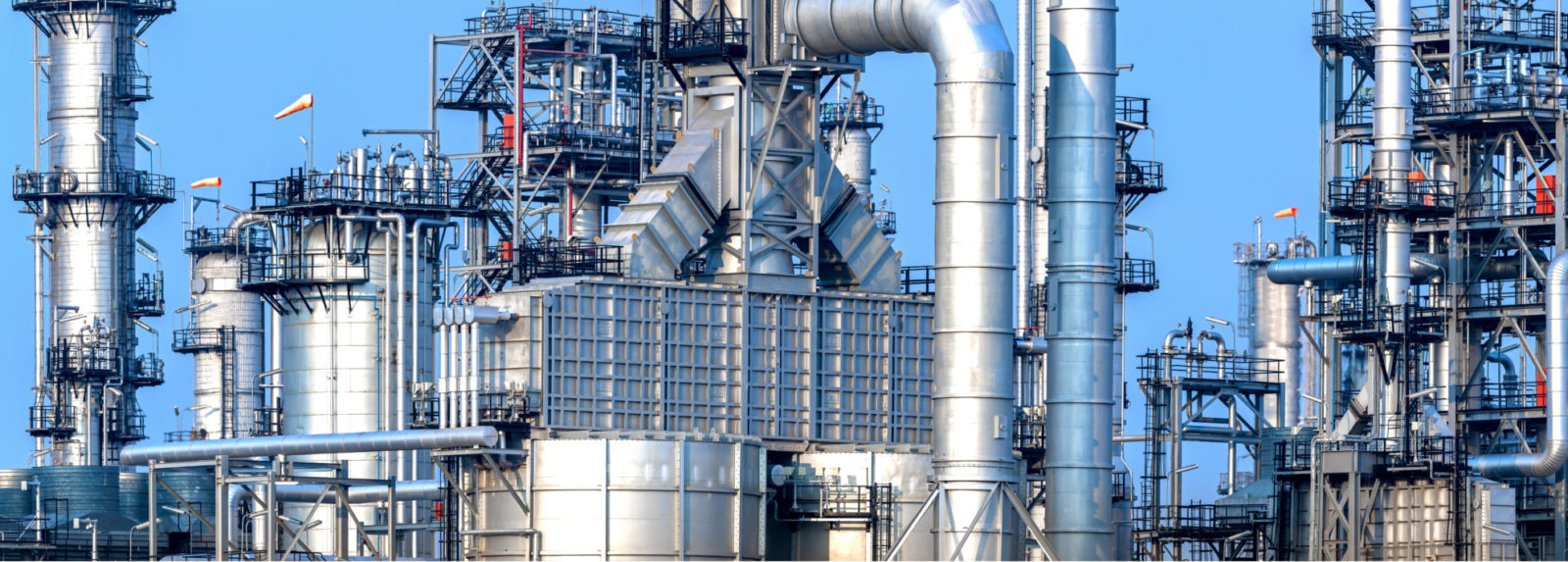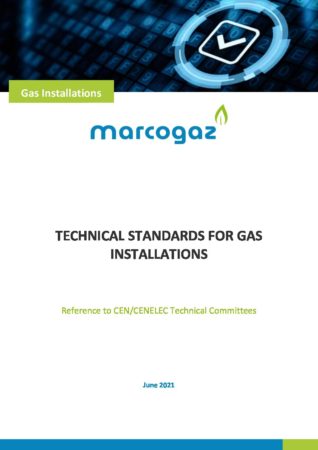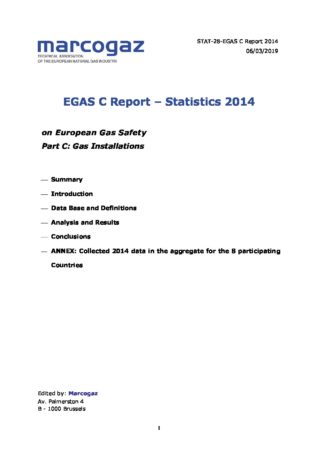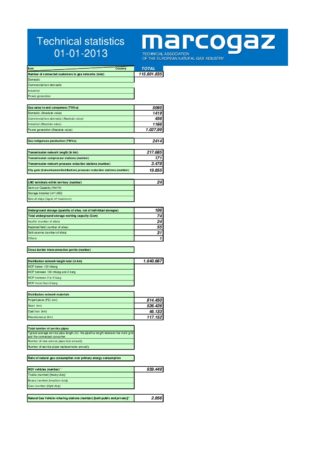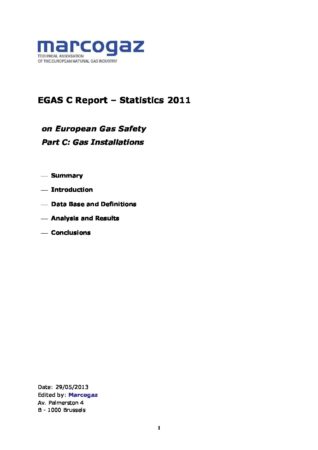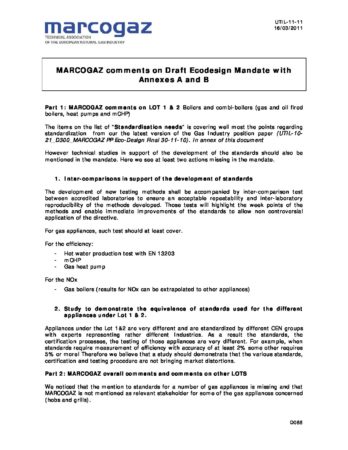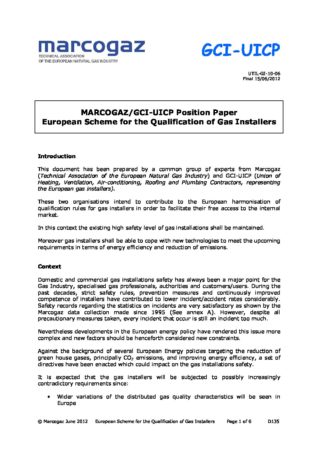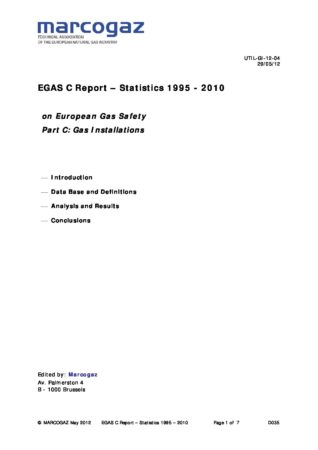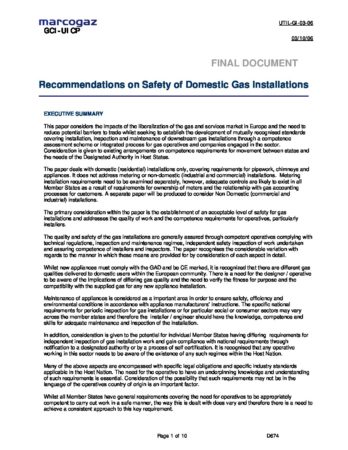Gas Utilisation > Gas Installations
The working group is essentially dealing with domestic and small commercial gas installations. These refer to the appliances and instruments placed downward the gas meter used for billing. They are made of gas supplying pipelines, valves, gas appliances, systems to supply air — necessary for the combustion process — and the equipment to evacuate the combustion products such as fumes. The safety systems are also included in the installations.
There are different typical domestic and commercial gas appliances connected to the grid, including gas-fired condensing boilers, hybrid systems (e.g. condensing boiler and solar), gas heat pumps, micro-CHP (combined heat and power production), cooking appliances, fuel cells (hydrogen powered), etc.
Gas installations must be aligned with technical, safety and environmental regulations. From a technical standpoint, gas installations are required to operate with excellent efficiency and a high level of reliability. MARCOGAZ is exchanging on topics covering the use of appropriate materials, the inspections and maintenance of the installations, operational competences (skills), etc.
As for safety, it is important to guarantee that the tightness (fuel gas) of the full installation is effective as well as an efficient evacuation of the exhaust gas (fumes) without representing any danger to the final-user.
When addressing environmental concerns, the emissions (CO2, CH4, etc.) from the installations must remain within the acceptable range and comply with environmental regulations.
The installations are not under the responsibility of the distribution system operators, instead, customers are responsible for the maintenance of their gas appliances. However, MARCOGAZ is pro-actively supporting the constant improvement of the safe and efficient use of gas in diverse appliances/systems, to provide additional safety to customers.
Gas regulation in the EU differs from country to country and MARCOGAZ conducts benchmarking to determine the variations and explain the disparities.
MARCOGAZ develops reporting (EGAS C) on European gas safety installations to provide and encourage better communication on the safety performance of gas installations. The industry conducts data collection of safety records — accident, injury, fatalities, etc. — related to domestic, residential, commercial and tertiary installations. Statistical analysis of the collected data supports MARCOGAZ in the production of trends, conclusions and recommendations.
The experts are also exchanging views on research projects led by MARCOGAZ members and assessing the possible use of its results.

Chair
Marc Berger

